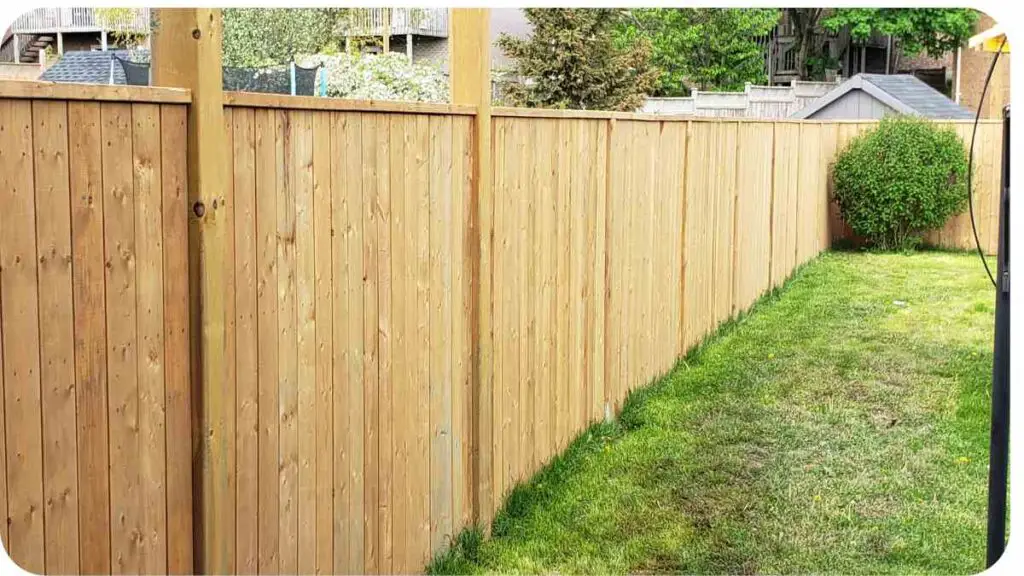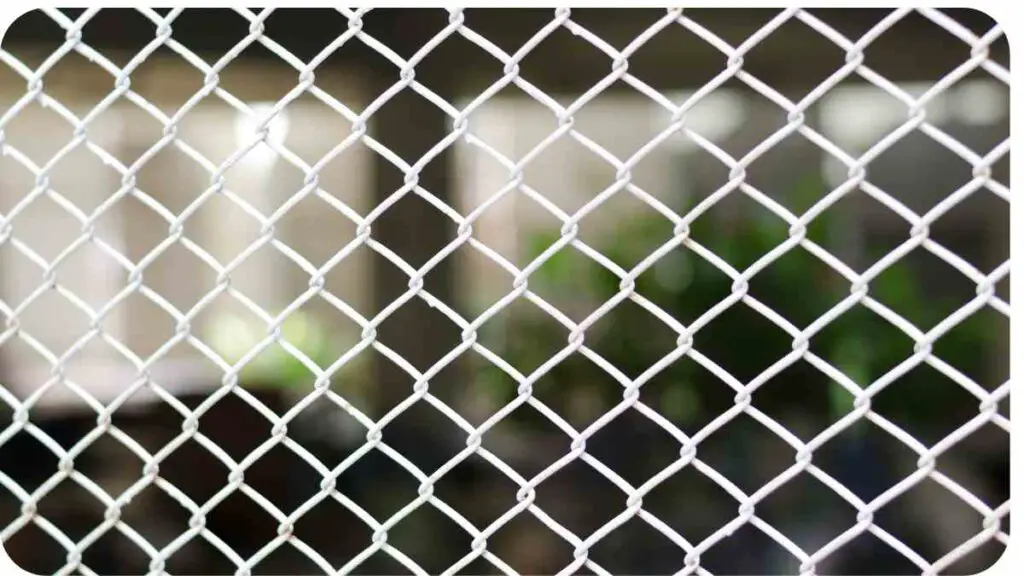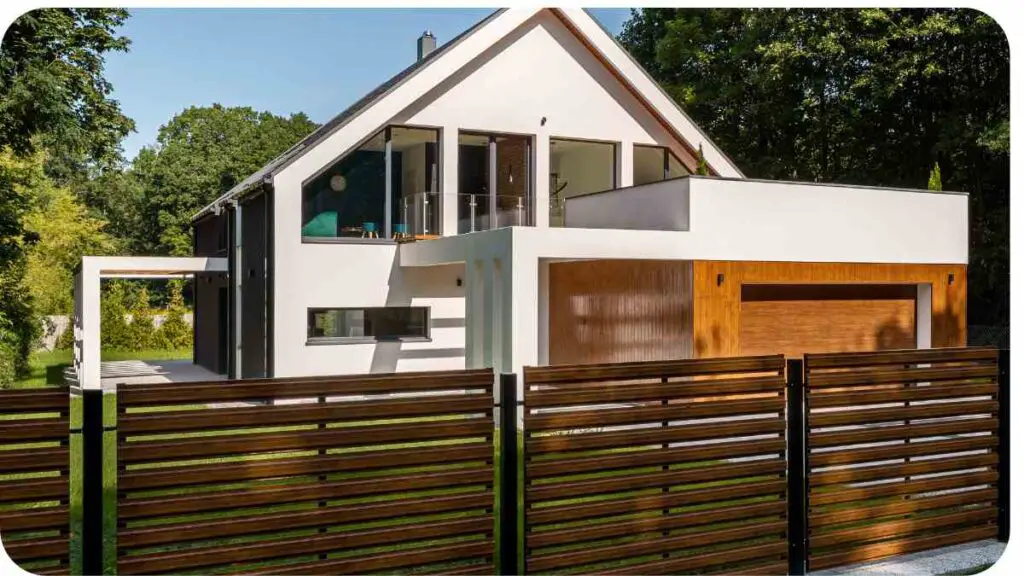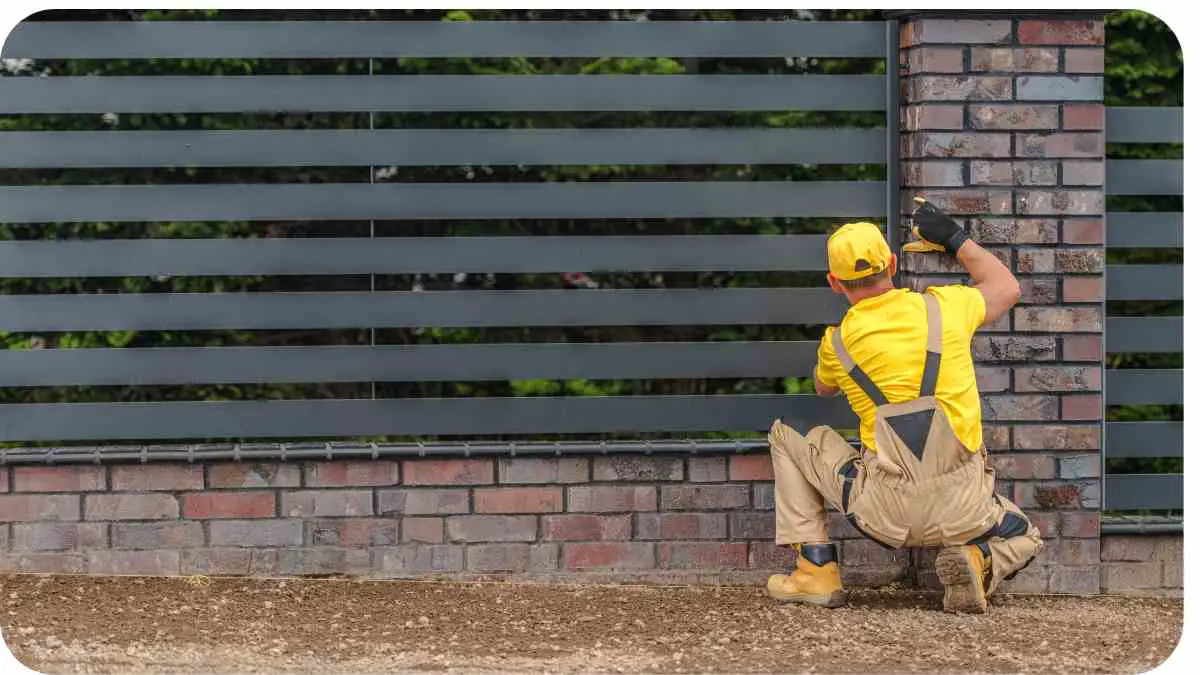Are you looking to enhance your backyard’s privacy or add a boundary that won’t break the bank? Building a cheap backyard fence can be a rewarding DIY project that adds value and functionality to your outdoor space.
Whether you’re aiming to keep pets safe, define property lines, or simply add aesthetic appeal, this guide will walk you through the steps to create a budget-friendly fence that suits your needs.
| Key Takeaways |
|---|
| 1. Choose the right fence material wisely. |
| 2. Plan your fence layout and measure accurately. |
| 3. Gather all necessary tools and supplies beforehand. |
| 4. Check local regulations and obtain permits if needed. |
| 5. Regular maintenance ensures longevity and durability. |
Understanding Your Needs
Before you pick up a hammer, it’s crucial to assess what you need from your backyard fence. Are you aiming for privacy, security, or a decorative touch? Understanding your goals will help you choose the right materials and design for your project. Consider factors like height requirements, maintenance preferences, and your overall budget.
Protect your garden with effective strategies like planting deer-resistant species and installing physical barriers. Learn more about keeping deer out of your backyard to maintain a thriving outdoor space.
Choosing the Right Materials
Selecting the appropriate materials is key to building a durable and cost-effective fence. Here’s a comparison of common fence materials to help you decide:
| Material | Pros | Cons |
|---|---|---|
| Wood | Natural look, versatile, customizable | Requires regular maintenance |
| Vinyl | Low maintenance, durable, versatile | Higher initial cost |
| Chain Link | Affordable, low maintenance | Less privacy, industrial look |
Each material offers unique advantages depending on your priorities. For a detailed breakdown of costs and considerations, refer to the specific material sections below.
Planning Your Fence Layout

Once you’ve chosen the right materials, the next step is to plan your fence layout. Consider the perimeter of your backyard, property lines, and any specific areas you want to enclose or protect. Use measuring tape and stakes to outline where your fence will go, ensuring accuracy before you proceed.
Gathering Tools and Supplies
Before starting construction, gather all the necessary tools and supplies. This typically includes:
- Tools: Hammer, nails/screws, saw, level, measuring tape, post hole digger, and possibly a power drill.
- Supplies: Fence panels or boards, posts, concrete (for setting posts), gravel (for drainage), and any additional materials based on your chosen fence type.
Having everything ready will streamline the building process and prevent interruptions.
Explore the delightful possibilities of growing your favorite fruits right in your backyard. Discover what fruit varieties are ideal for your space to enjoy fresh produce at your fingertips
Preparing Your Backyard
Prepare your backyard by clearing debris and marking utility lines. Call your local utility companies to ensure you won’t accidentally dig into underground lines or pipes. This step is crucial for safety and to avoid costly repairs later.
Building a Wooden Fence
Wooden fences are popular for their natural aesthetic and versatility. Here’s a cost breakdown to help you budget effectively:
Installing a Vinyl Fence
Vinyl fences are known for their durability and minimal maintenance requirements. Here are some pros and cons to consider:
Pros and Cons of Vinyl Fences
| Pros | Cons |
|---|---|
| Low maintenance | Higher initial cost |
| Resistant to rot, fading, and weather | Limited color options |
| Easy to clean and maintain | Can be susceptible to cracks in extreme temperatures |
Vinyl fences come in various styles and colors, offering flexibility in design. Ensure you choose a reputable manufacturer for quality materials that withstand weather conditions in your area.
Constructing a Chain Link Fence

Chain link fences are cost-effective and provide visibility while securing your backyard. Here are key considerations:
Planning a memorable backyard wedding involves careful budgeting and creative ideas. Find out how much it costs to host a backyard wedding and make your celebration unforgettable without breaking the bank.
Key Considerations for Chain Link Fences
| Consideration | Details |
|---|---|
| Affordability | Lower initial cost compared to other materials |
| Low maintenance | Minimal privacy, suitable for boundary marking |
| Durability | Galvanized or vinyl-coated options increase longevity |
Chain link fences are ideal for homes where visibility is preferred over complete privacy. Customize your fence height and gauge based on your specific needs and local regulations.
Tips for DIY Fence Installation
Regardless of the type of fence you choose, here are some practical tips for successful DIY installation:
- Read and Follow Instructions: Refer to manufacturer guidelines for installation steps and safety precautions.
- Secure Proper Permits: Check local regulations and obtain any necessary permits before starting construction.
- Set Posts Correctly: Use concrete for stability and ensure posts are level and properly aligned.
- Weather Considerations: Plan construction during favorable weather conditions to ensure the longevity of materials.
Maintaining Your Fence

To prolong the life of your backyard fence, regular maintenance is essential:
- Inspect Regularly: Check for damage, loose posts, or signs of wear and tear.
- Clean as Needed: Wash vinyl fences with mild soap and water to remove dirt and grime.
- Repaint or Stain: Wooden fences may require periodic staining or painting to protect against weather elements.
- Address Issues Promptly: Repair any damages promptly to prevent further deterioration and costly repairs.
Transform your backyard into a charming wedding venue with these practical tips. Learn how to plan and execute a beautiful wedding in your backyard that reflects your personal style and creates lasting memories.
Enhancing Privacy and Security
Depending on your needs, you can enhance privacy and security with your backyard fence:
- Privacy Options: Add height to your fence with lattice panels or choose solid panels for complete privacy.
- Security Features: Consider adding locks, motion sensor lights, or landscaping deterrents around your fence perimeter.
Enhancing these aspects not only adds functionality but also increases the value of your property.
Dealing with Common Fence Problems
Fences can encounter various issues over time. Here’s how to handle common problems:
- Rotting Wood: Replace affected boards and consider using treated lumber or protective coatings.
- Sagging Gates: Adjust hinges and reinforce with additional support if necessary.
- Rust on Chain Link: Clean with a wire brush and apply rust-resistant paint or coatings.
Regular maintenance and timely repairs can prevent these issues from escalating.
Legal Considerations and Permits
Before building your backyard fence, consider the legal aspects:
- Local Regulations: Check zoning laws, property line setbacks, and height restrictions.
- Permits: Obtain any required permits or approvals from your local municipality or homeowners’ association.
Enhance your outdoor living space with a durable and attractive concrete floor. Discover how to build a concrete backyard floor with step-by-step instructions for a functional and aesthetic upgrade to your home.
Failure to comply with regulations can lead to fines or the need to modify or remove your fence.
Conclusion
Building a cheap backyard fence can transform your outdoor space, providing privacy, security, and aesthetic appeal without breaking the bank. By understanding your needs, choosing the right materials, and following a structured approach, you can successfully complete this DIY project. Whether you opt for the natural charm of a wooden fence, the durability of vinyl, or the affordability of chain link, each option offers unique benefits to suit your preferences.
Throughout the process, proper planning, accurate measurements, and adherence to local regulations are crucial for a successful outcome. Regular maintenance ensures your fence remains sturdy and attractive for years to come. Remember, while building your own fence can be rewarding, it’s essential to prioritize safety and craftsmanship.
By following the tips and guidelines outlined in this article, you’ll be well-equipped to create a backyard fence that enhances your property’s value and enjoyment. Take pride in your handiwork and enjoy the benefits of a beautifully fenced backyard space.
Further Reading
- Bob Vila – Cheap Fence Ideas: Discover creative and budget-friendly ideas for building fences that enhance your outdoor space without breaking the bank.
- The Spruce – DIY Privacy Fence: Step-by-step guide to building a DIY privacy fence, including materials, tools, and design tips.
- Homebuilding UK – Cheap Fence Ideas: Explore practical and stylish options for inexpensive fencing solutions to suit various property types and styles.
FAQs
How Do I Choose the Right Fence Material?
Choosing the right fence material depends on factors like desired aesthetics, maintenance requirements, and budget. Wood offers a natural look but requires upkeep, while vinyl is low maintenance but comes with a higher initial cost.
What Permits Do I Need to Build a Backyard Fence?
Permit requirements vary by location. Check with your local municipality or homeowners’ association to determine if permits are needed for fence installation. Failure to comply can lead to fines or removal of the fence.
How Can I Ensure My Fence is Sturdy?
Ensure your fence is sturdy by using proper installation techniques. Set posts securely in concrete, check for level alignment, and use quality materials that withstand weather conditions in your area.
What Are Some Ways to Enhance Privacy with My Fence?
Enhance privacy by choosing taller fence panels, adding lattice or slats, or planting shrubs along the perimeter. These methods create a barrier that limits visibility into your backyard.
How Do I Maintain My Backyard Fence?
Regular maintenance is key to prolonging your fence’s life. Inspect for damage, clean as needed, and repaint or stain wooden fences to protect against weather elements and wear.

I am Hellen James, a landscape architect. For many years I have written about landscaping for various publications; however, recently decided to focus my writing on personal experience as a profession.

